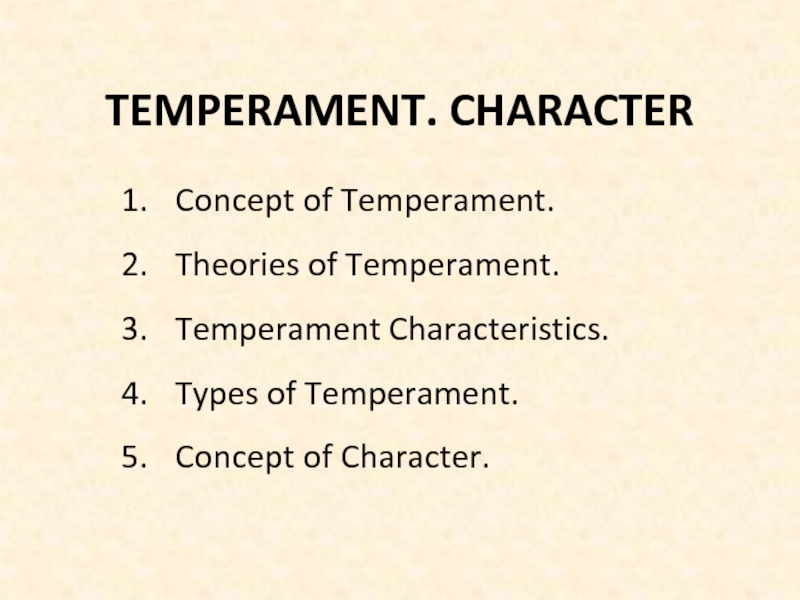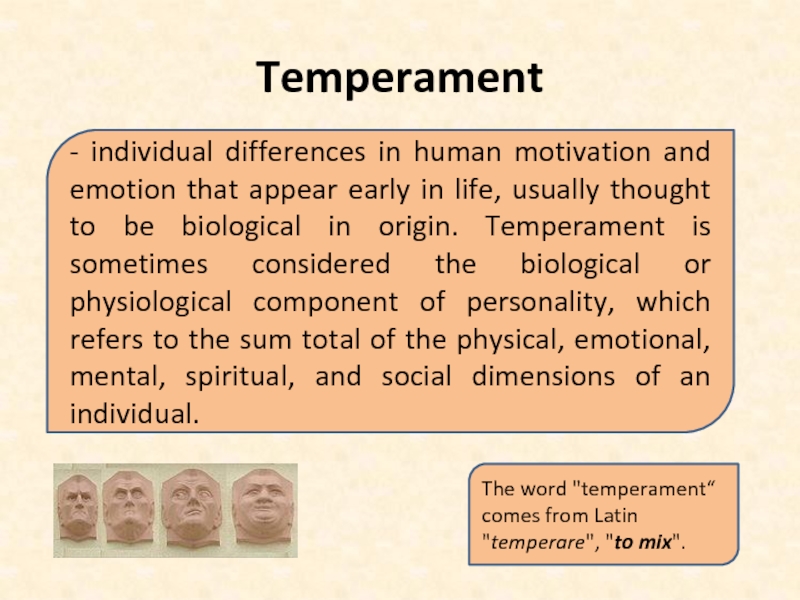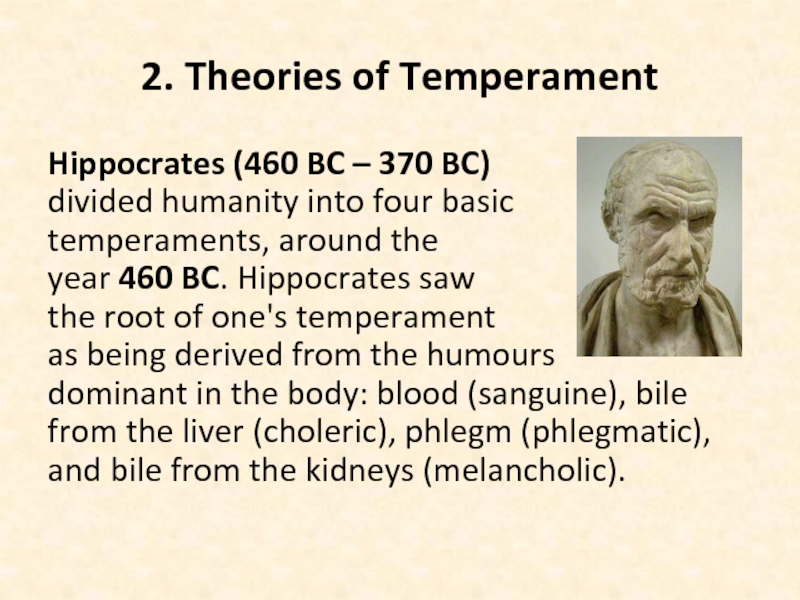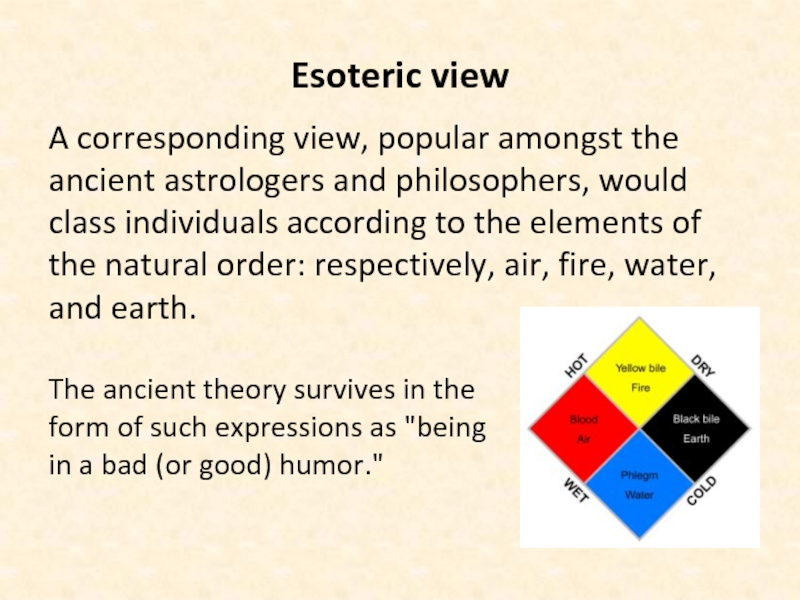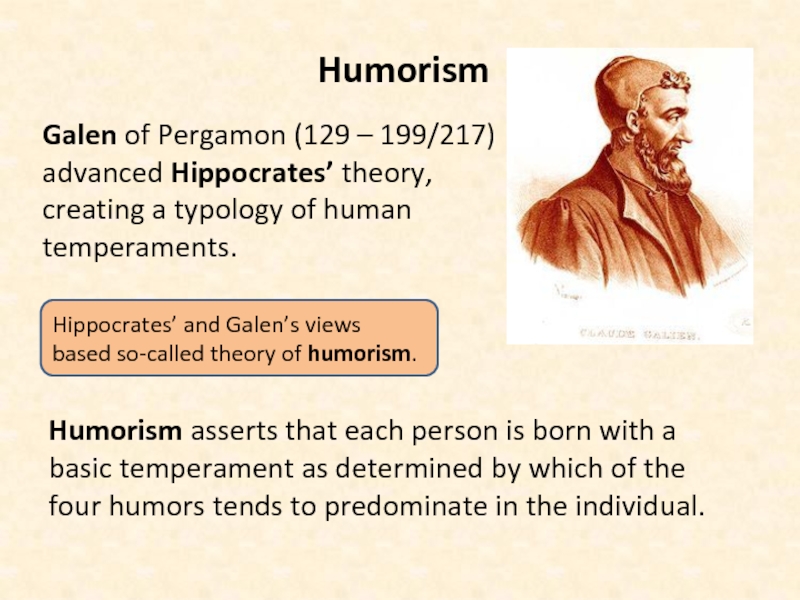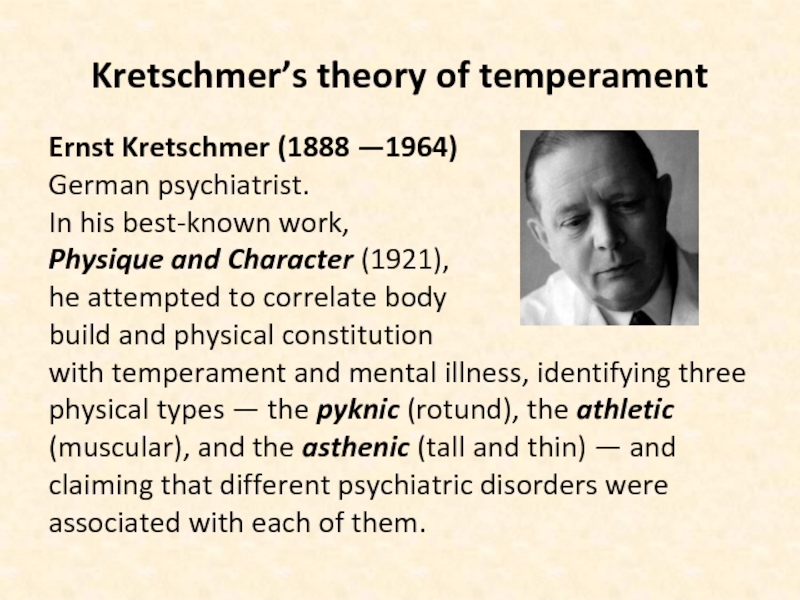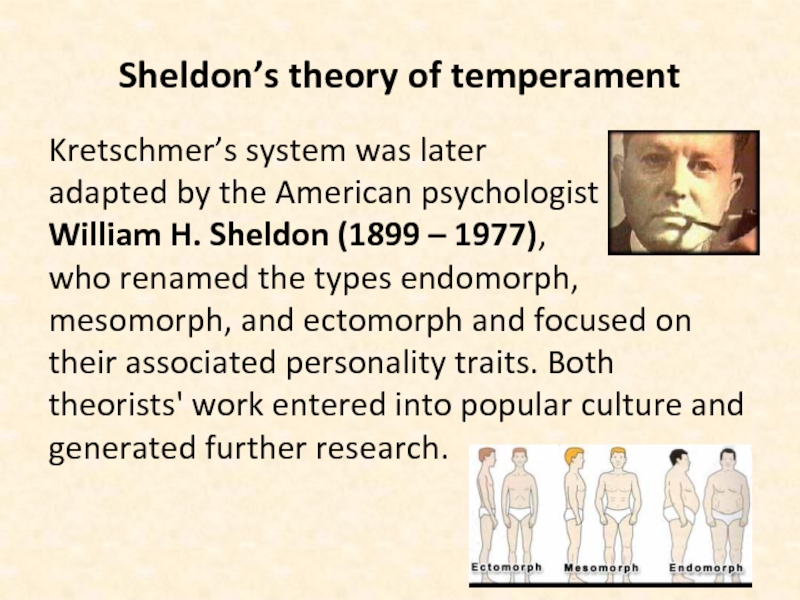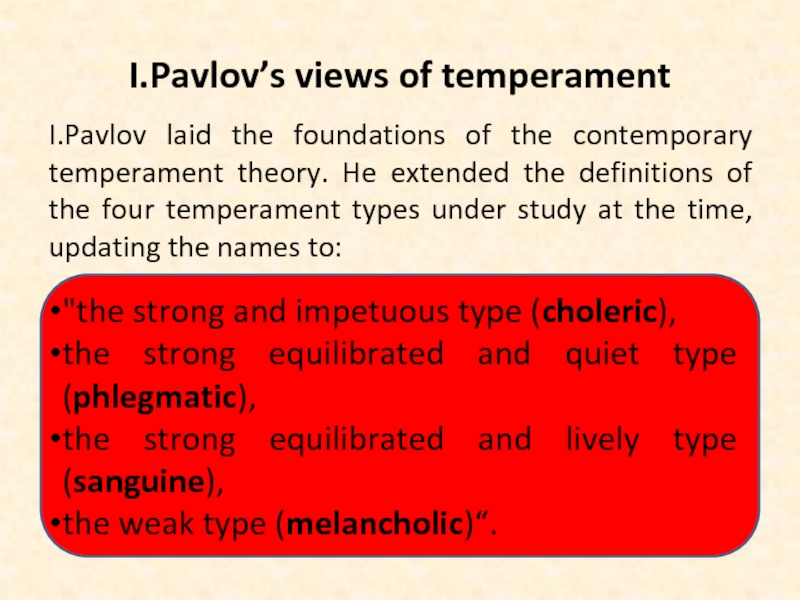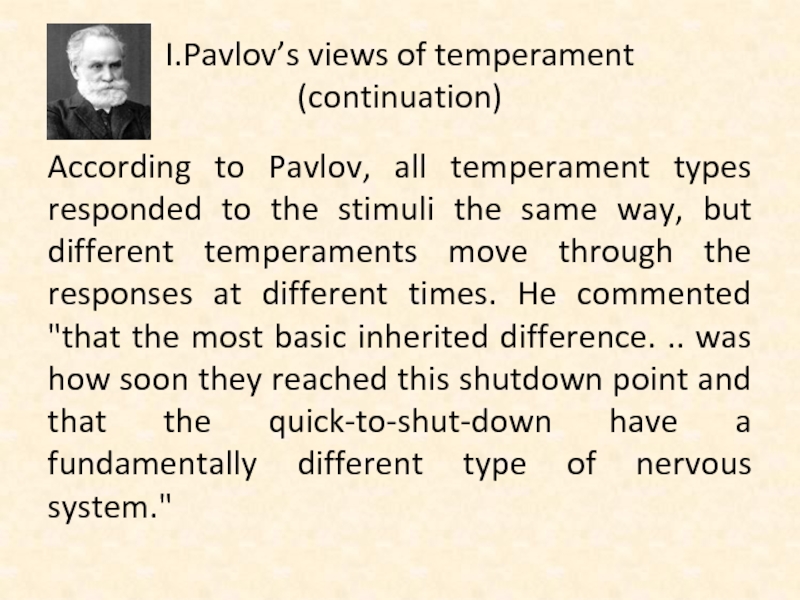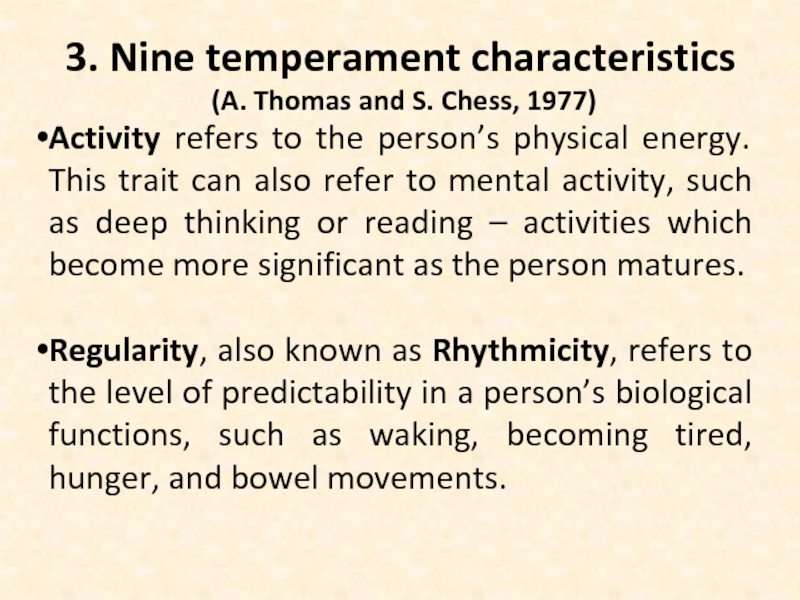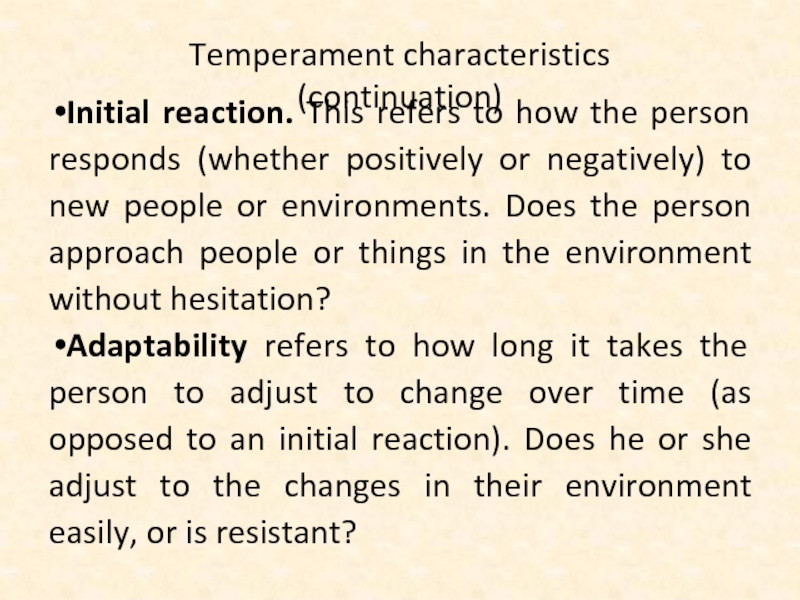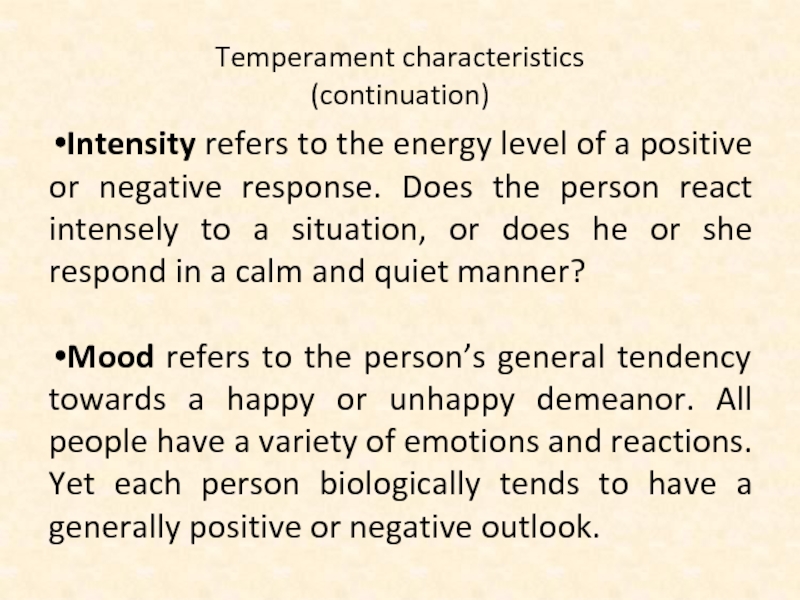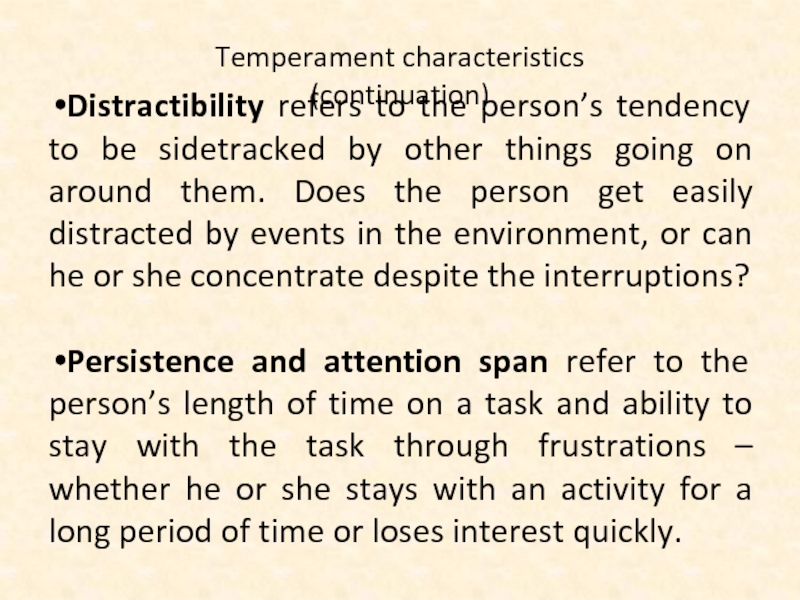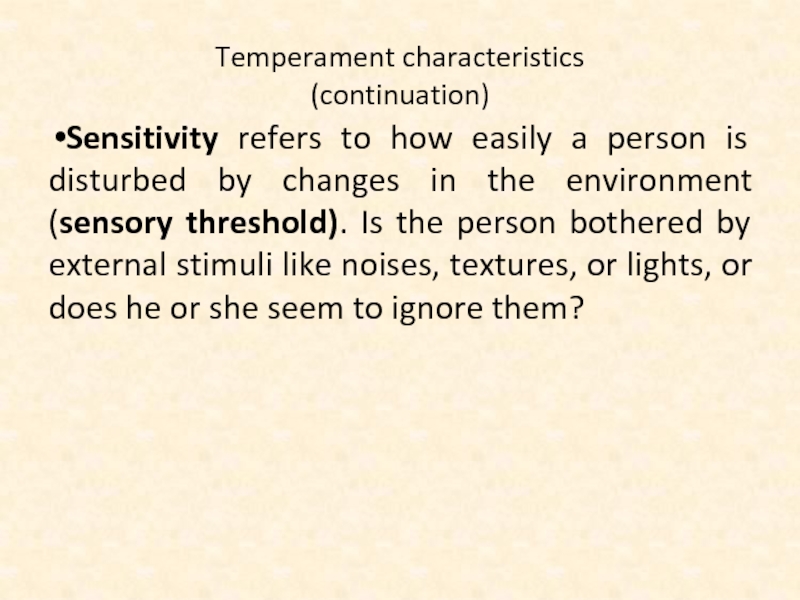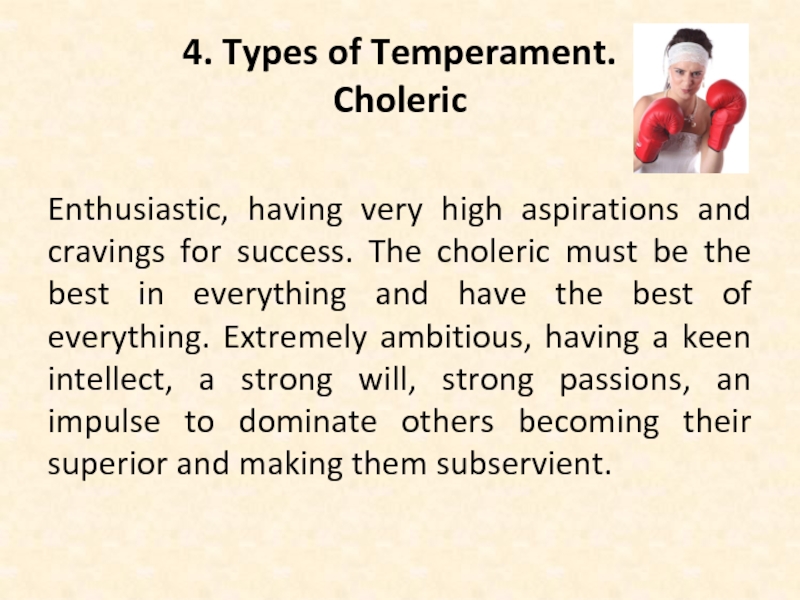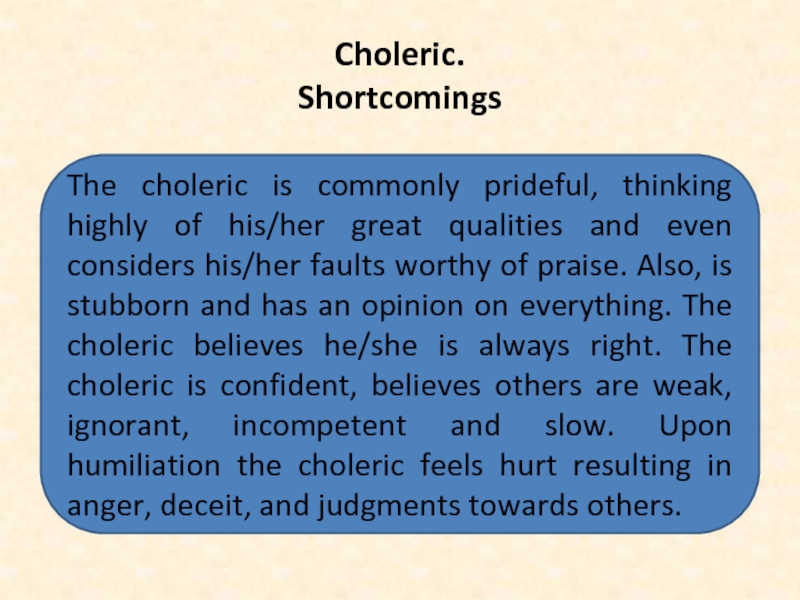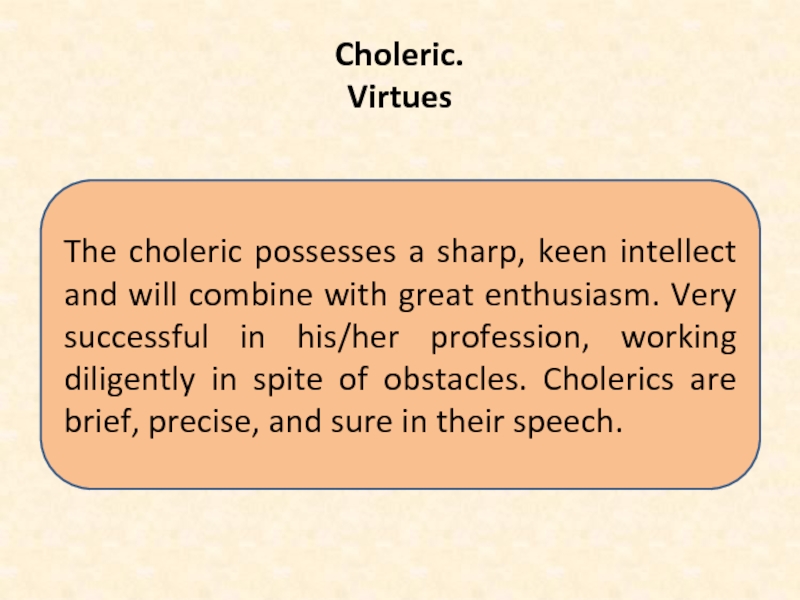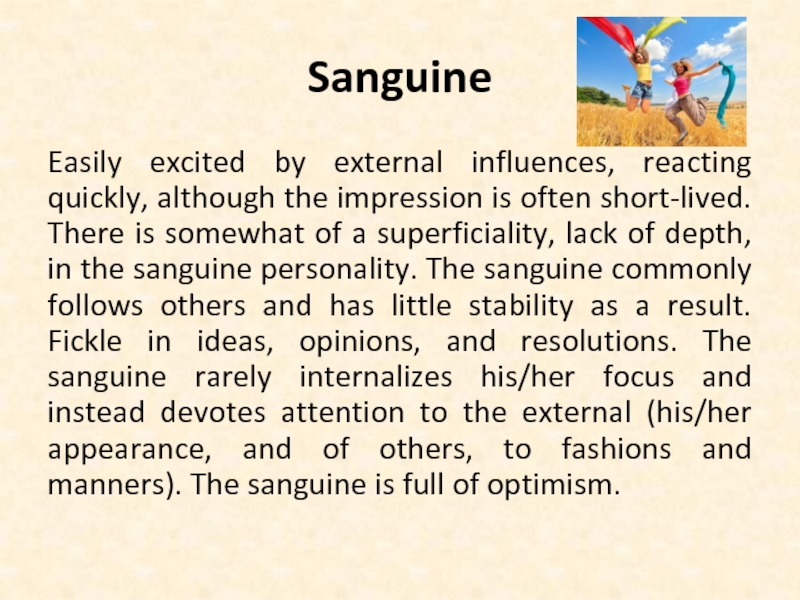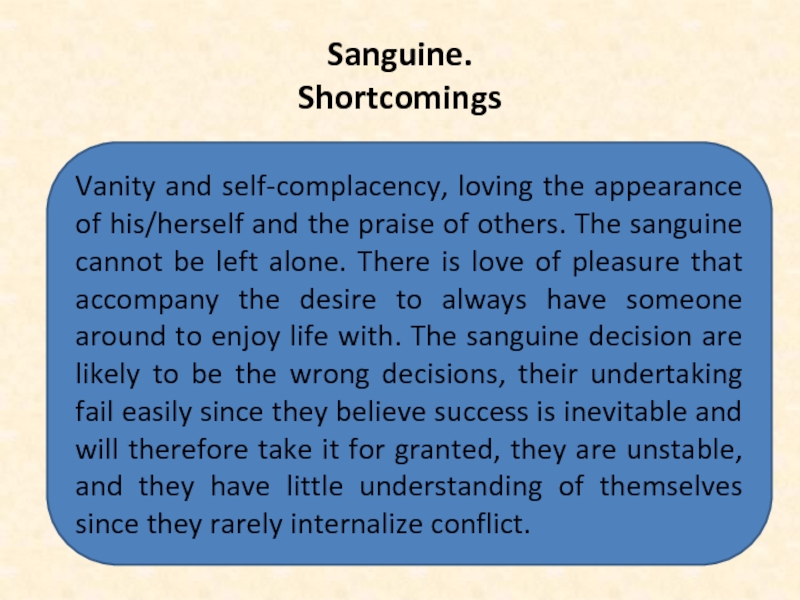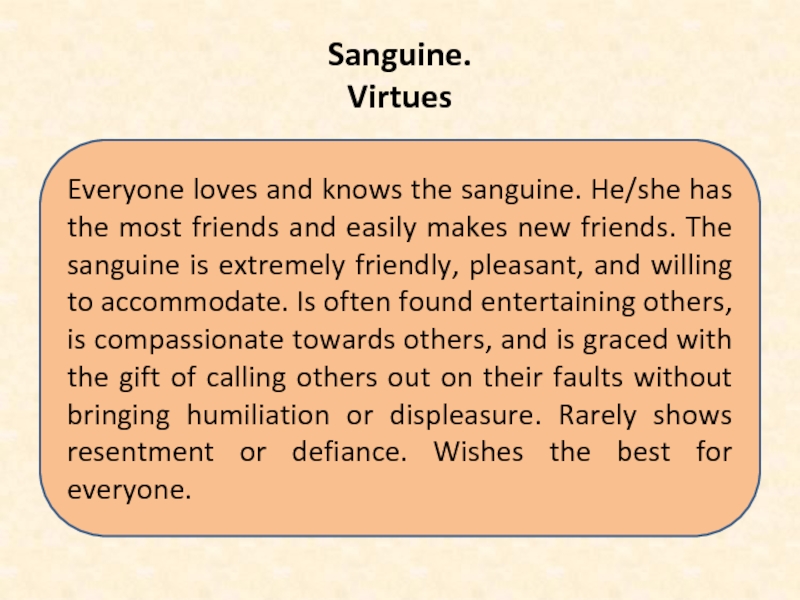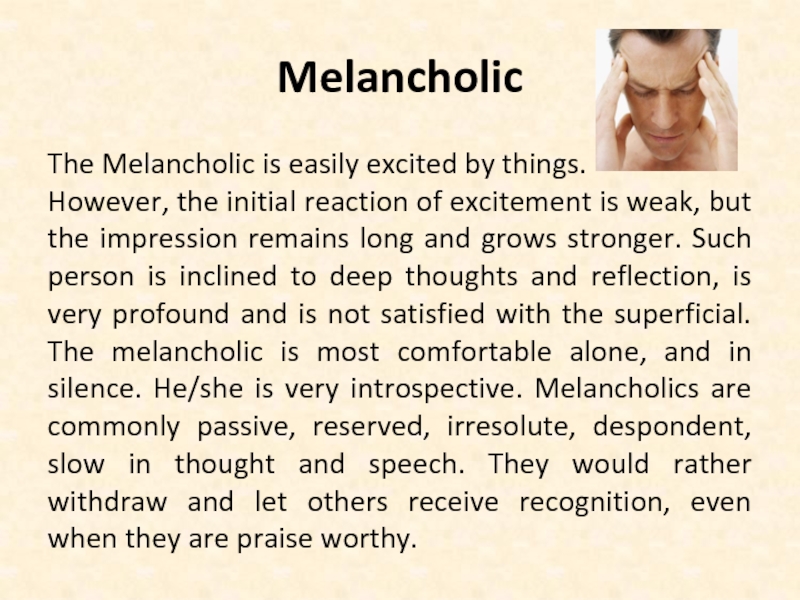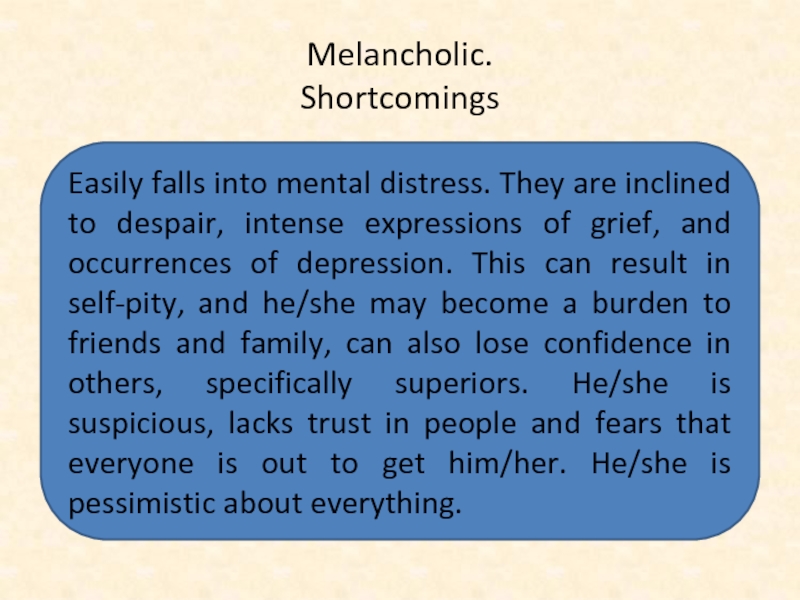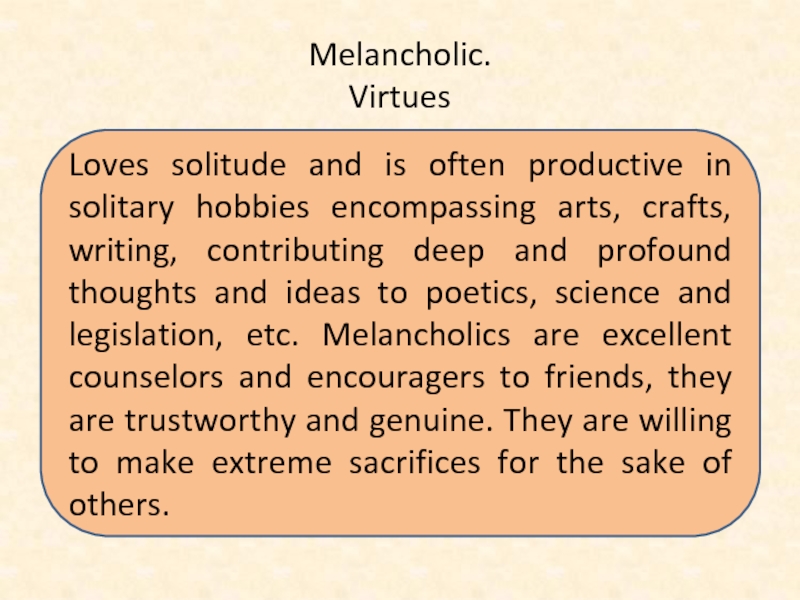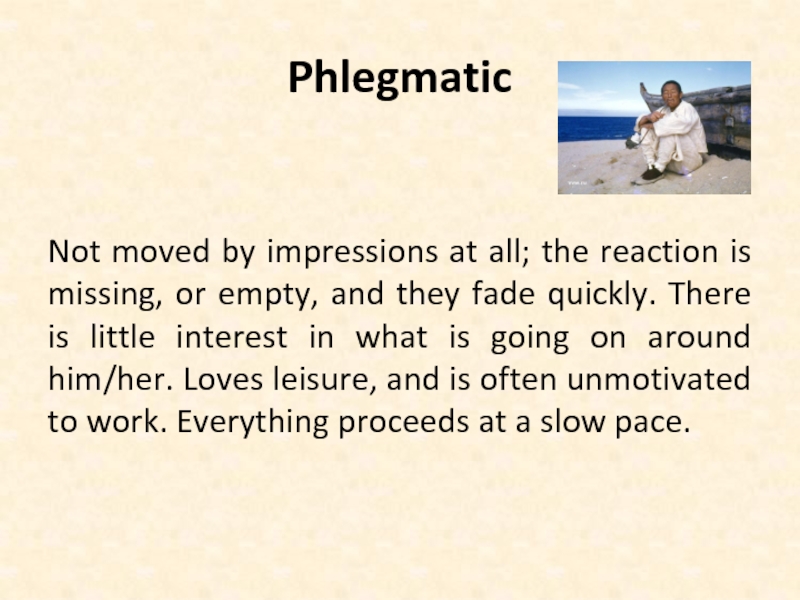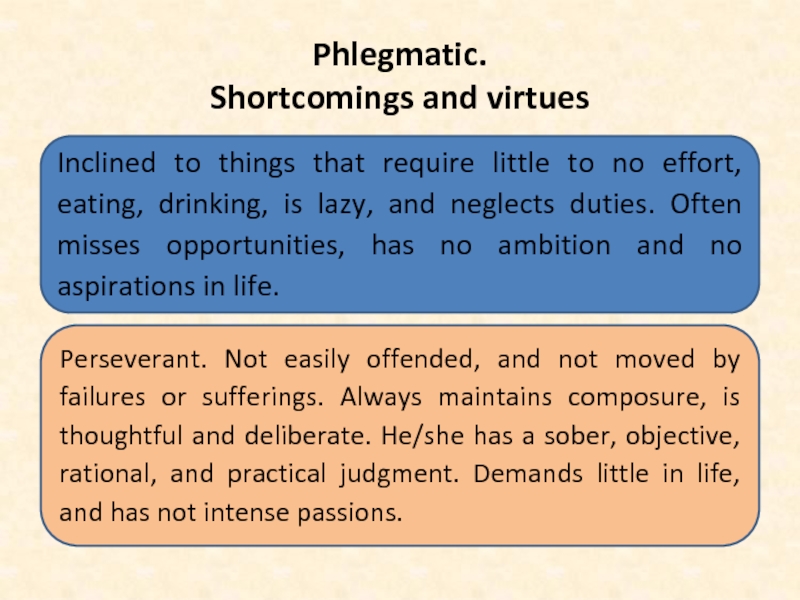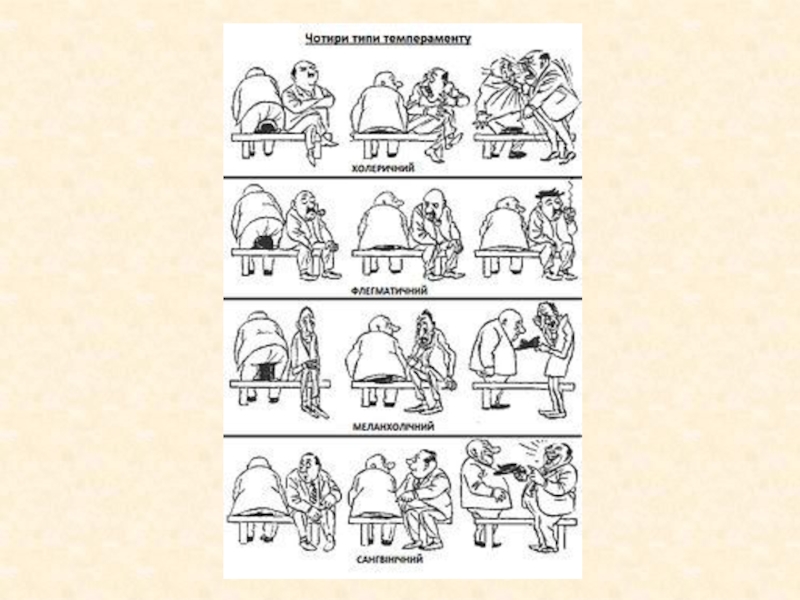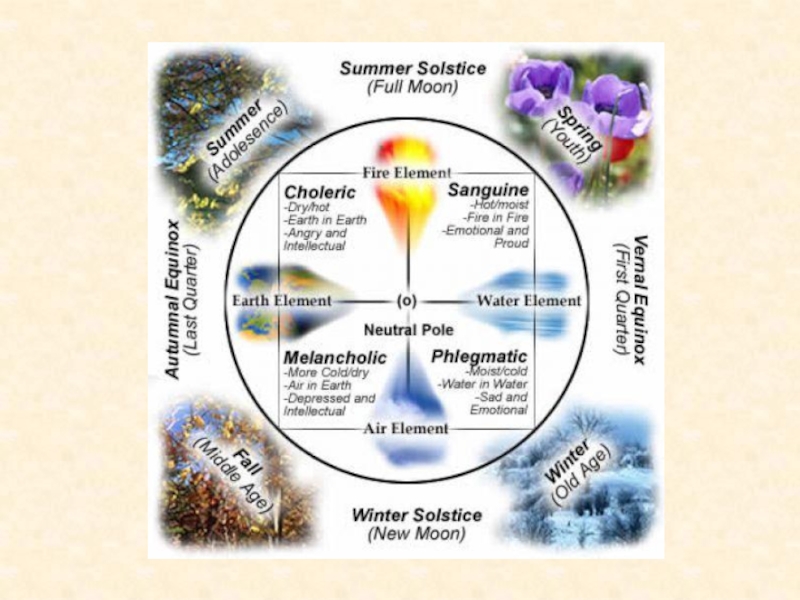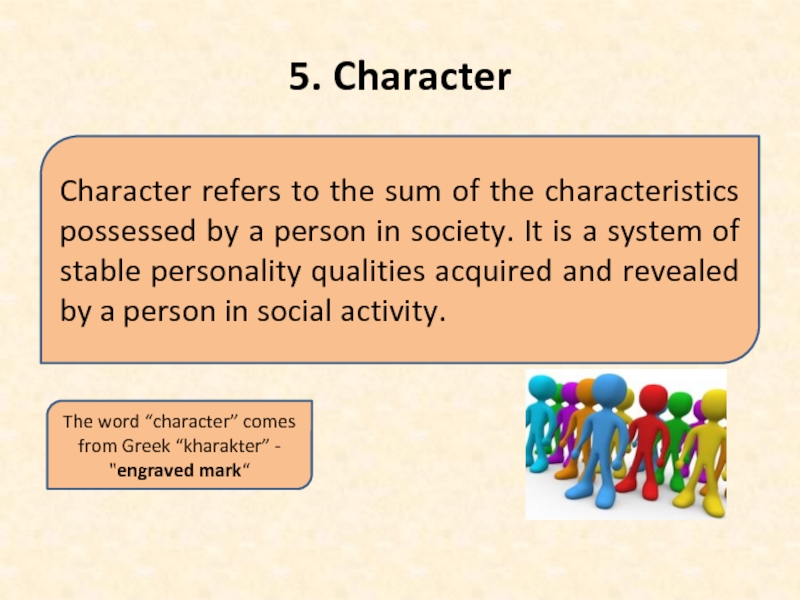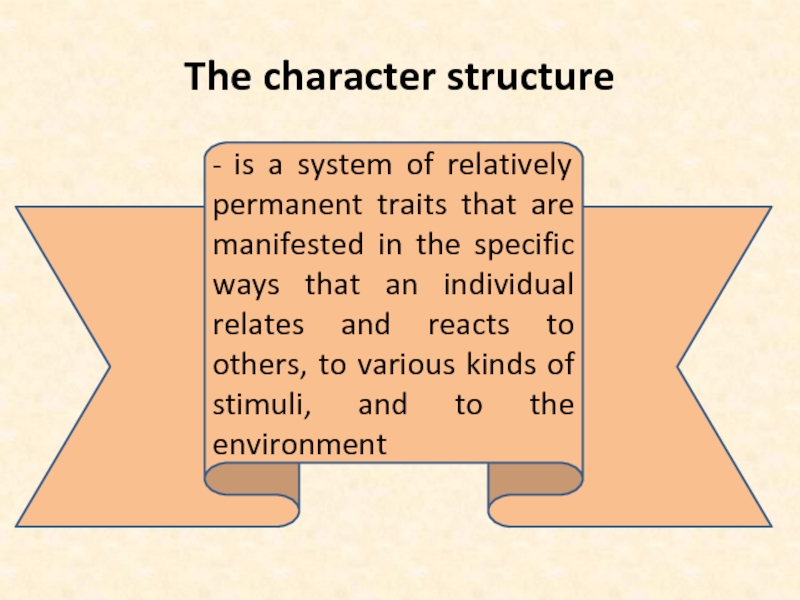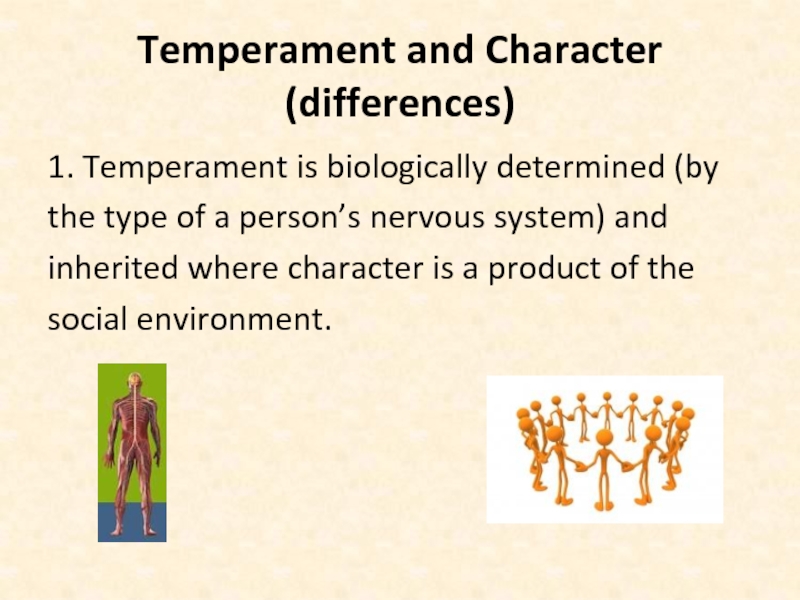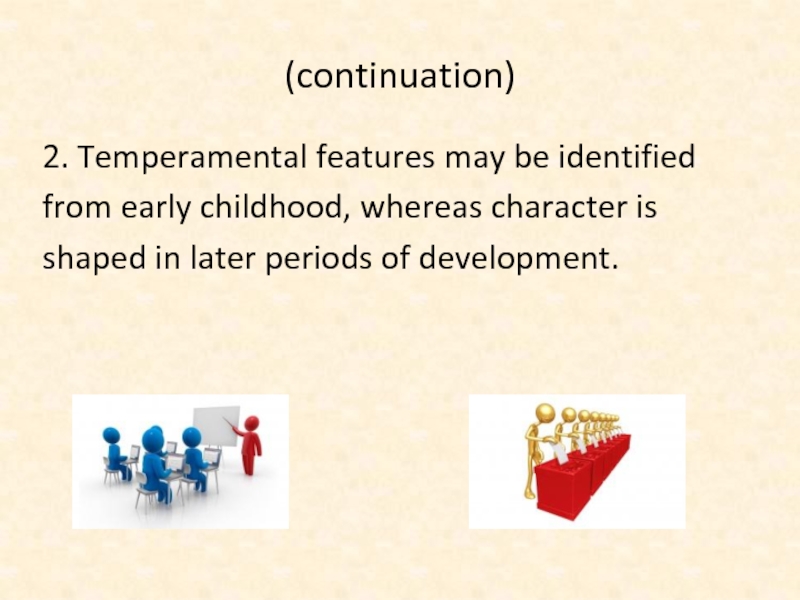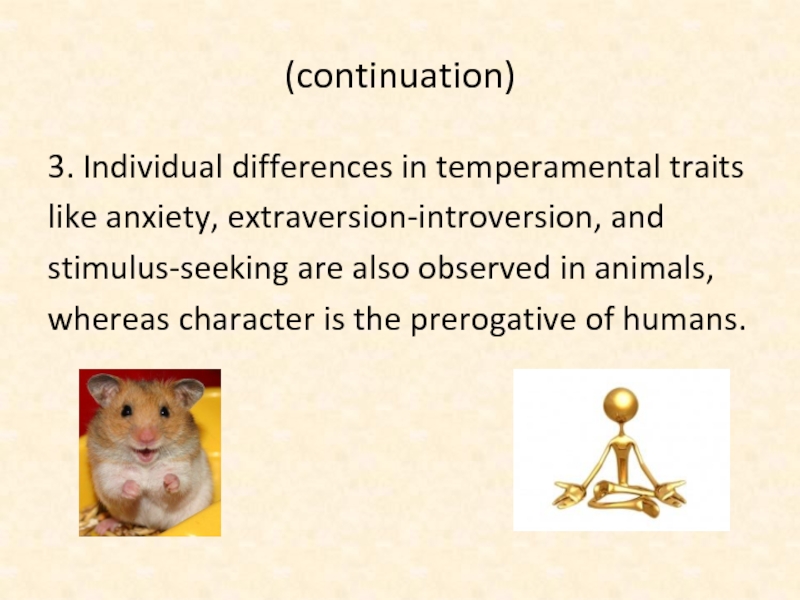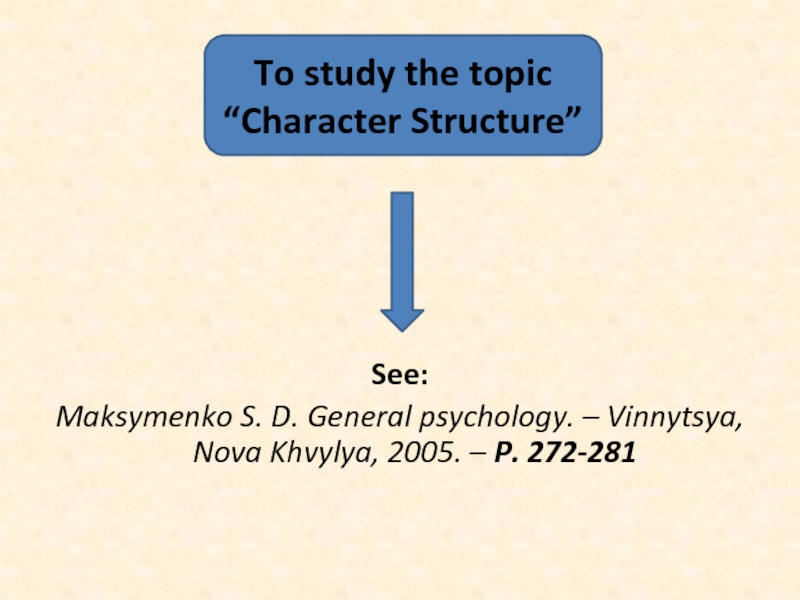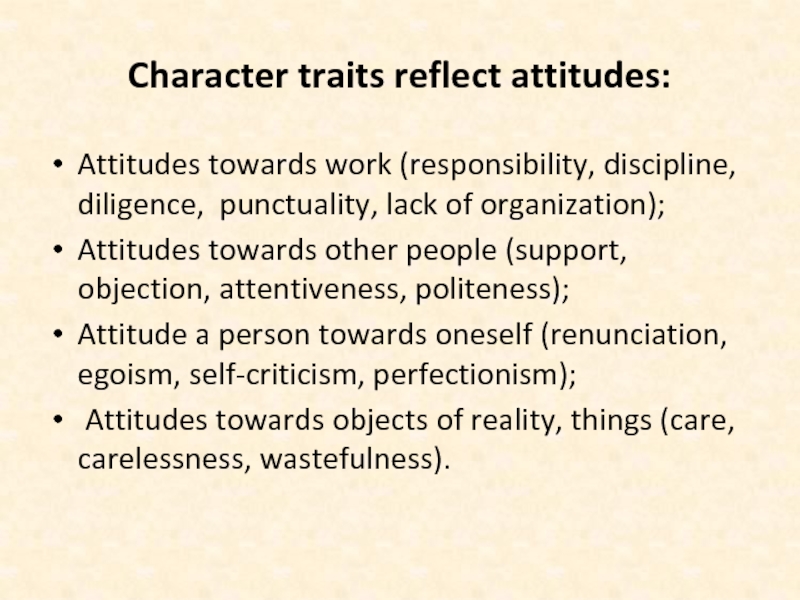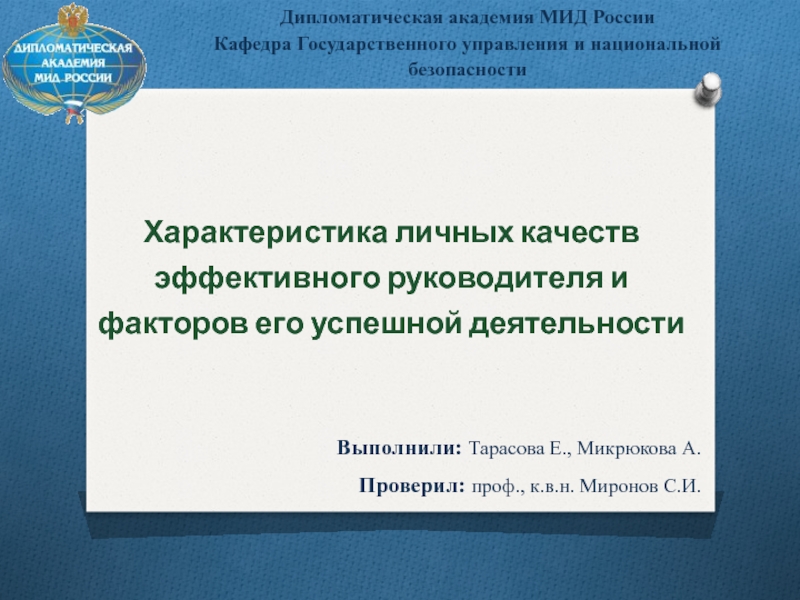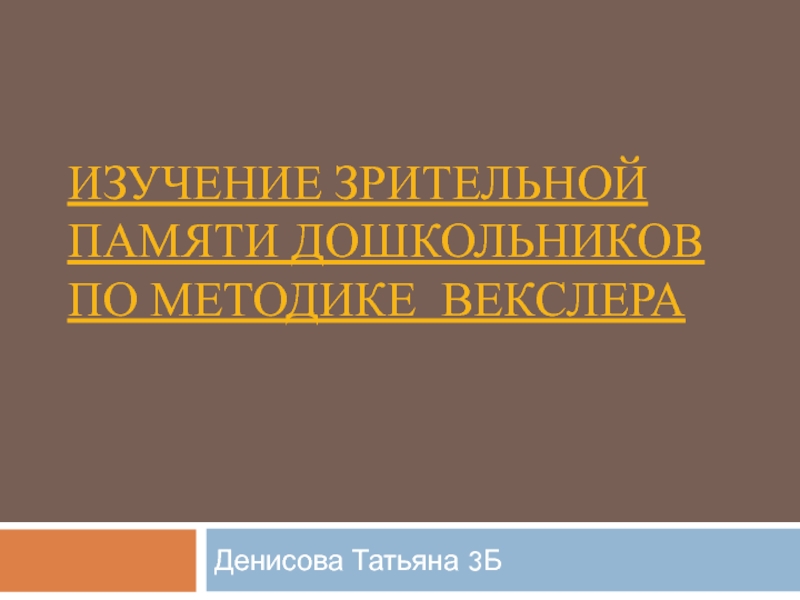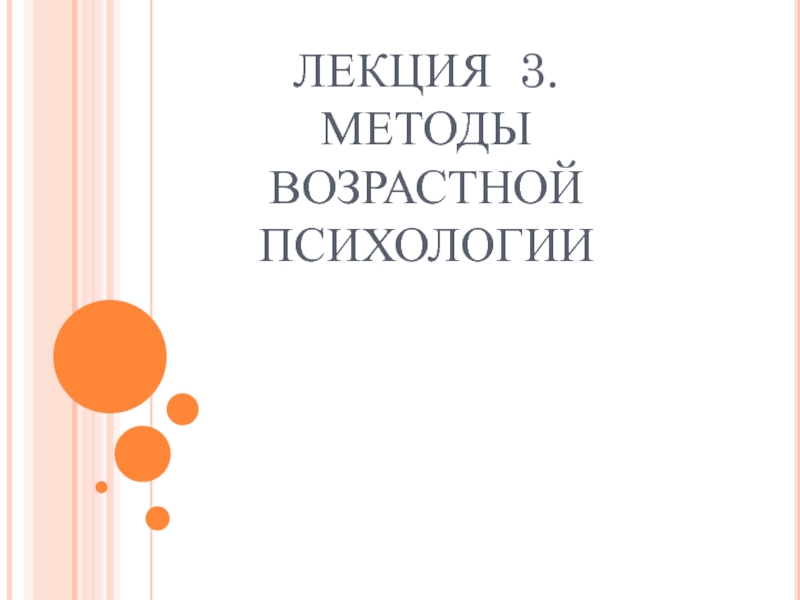- Главная
- Разное
- Дизайн
- Бизнес и предпринимательство
- Аналитика
- Образование
- Развлечения
- Красота и здоровье
- Финансы
- Государство
- Путешествия
- Спорт
- Недвижимость
- Армия
- Графика
- Культурология
- Еда и кулинария
- Лингвистика
- Английский язык
- Астрономия
- Алгебра
- Биология
- География
- Детские презентации
- Информатика
- История
- Литература
- Маркетинг
- Математика
- Медицина
- Менеджмент
- Музыка
- МХК
- Немецкий язык
- ОБЖ
- Обществознание
- Окружающий мир
- Педагогика
- Русский язык
- Технология
- Физика
- Философия
- Химия
- Шаблоны, картинки для презентаций
- Экология
- Экономика
- Юриспруденция
Temperament. Character презентация
Содержание
- 1. Temperament. Character
- 2. Temperament The word "temperament“ comes from Latin
- 3. 2. Theories of Temperament Hippocrates
- 4. Esoteric view A corresponding view, popular amongst
- 5. Humorism Galen of Pergamon (129 – 199/217)
- 6. Kretschmer’s theory of temperament Ernst Kretschmer
- 7. Sheldon’s theory of temperament Kretschmer’s system was
- 8. I.Pavlov’s views of temperament I.Pavlov laid the
- 9. I.Pavlov’s views of temperament (continuation) According to
- 10. 3. Nine temperament characteristics (A. Thomas
- 11. Temperament characteristics (continuation) Initial reaction. This refers
- 12. Temperament characteristics (continuation) Intensity refers to the
- 13. Temperament characteristics (continuation) Distractibility refers to the
- 14. Temperament characteristics (continuation) Sensitivity refers to how
- 15. 4. Types of Temperament. Choleric
- 16. Choleric. Shortcomings The choleric is commonly
- 17. Choleric. Virtues The choleric possesses a sharp,
- 18. Sanguine Easily excited by external influences, reacting
- 19. Sanguine. Shortcomings Vanity and self-complacency, loving
- 20. Sanguine. Virtues Everyone loves and knows the
- 21. Melancholic The Melancholic is easily excited by
- 22. Melancholic. Shortcomings Easily falls into mental
- 23. Melancholic. Virtues Loves solitude and is often
- 24. Phlegmatic Not moved by impressions
- 25. Phlegmatic. Shortcomings and virtues Inclined to
- 28. 5. Character The word “character” comes from
- 29. The character structure - is a
- 30. Temperament and Character (differences) 1. Temperament is
- 31. (continuation) 2. Temperamental features may be identified
- 32. (continuation) 3. Individual differences in temperamental traits
- 33. See:
- 34. Character traits reflect attitudes: Attitudes towards work
Слайд 1TEMPERAMENT. CHARACTER
Concept of Temperament.
Theories of Temperament.
Temperament Characteristics.
Types of Temperament.
Concept of
Слайд 2Temperament
The word "temperament“ comes from Latin "temperare", "to mix".
- individual
Слайд 3
2. Theories of Temperament
Hippocrates (460 BC – 370 BC)
divided humanity into
temperaments, around the
year 460 BC. Hippocrates saw
the root of one's temperament
as being derived from the humours
dominant in the body: blood (sanguine), bile from the liver (choleric), phlegm (phlegmatic), and bile from the kidneys (melancholic).
Слайд 4Esoteric view
A corresponding view, popular amongst the ancient astrologers and philosophers,
The ancient theory survives in the
form of such expressions as "being
in a bad (or good) humor."
Слайд 5Humorism
Galen of Pergamon (129 – 199/217)
advanced Hippocrates’ theory,
creating a
temperaments.
Humorism asserts that each person is born with a basic temperament as determined by which of the four humors tends to predominate in the individual.
Hippocrates’ and Galen’s views
based so-called theory of humorism.
Слайд 6Kretschmer’s theory of temperament
Ernst Kretschmer (1888 —1964)
German psychiatrist.
In
Physique and Character (1921),
he attempted to correlate body
build and physical constitution
with temperament and mental illness, identifying three physical types — the pyknic (rotund), the athletic (muscular), and the asthenic (tall and thin) — and claiming that different psychiatric disorders were associated with each of them.
Слайд 7Sheldon’s theory of temperament
Kretschmer’s system was later
adapted by the American
William H. Sheldon (1899 – 1977),
who renamed the types endomorph, mesomorph, and ectomorph and focused on their associated personality traits. Both theorists' work entered into popular culture and generated further research.
Слайд 8I.Pavlov’s views of temperament
I.Pavlov laid the foundations of the contemporary temperament
"the strong and impetuous type (choleric),
the strong equilibrated and quiet type (phlegmatic),
the strong equilibrated and lively type (sanguine),
the weak type (melancholic)“.
Слайд 9I.Pavlov’s views of temperament
(continuation)
According to Pavlov, all temperament types responded to
Слайд 103. Nine temperament characteristics
(A. Thomas and S. Chess, 1977)
Activity
Regularity, also known as Rhythmicity, refers to the level of predictability in a person’s biological functions, such as waking, becoming tired, hunger, and bowel movements.
Слайд 11Temperament characteristics
(continuation)
Initial reaction. This refers to how the person responds (whether
Adaptability refers to how long it takes the person to adjust to change over time (as opposed to an initial reaction). Does he or she adjust to the changes in their environment easily, or is resistant?
Слайд 12Temperament characteristics
(continuation)
Intensity refers to the energy level of a positive or
Mood refers to the person’s general tendency towards a happy or unhappy demeanor. All people have a variety of emotions and reactions. Yet each person biologically tends to have a generally positive or negative outlook.
Слайд 13Temperament characteristics
(continuation)
Distractibility refers to the person’s tendency to be sidetracked by
Persistence and attention span refer to the person’s length of time on a task and ability to stay with the task through frustrations – whether he or she stays with an activity for a long period of time or loses interest quickly.
Слайд 14Temperament characteristics
(continuation)
Sensitivity refers to how easily a person is disturbed by
Слайд 154. Types of Temperament.
Choleric
Enthusiastic, having very high aspirations and cravings
Слайд 16Choleric.
Shortcomings
The choleric is commonly prideful, thinking highly of his/her great qualities
Слайд 17Choleric.
Virtues
The choleric possesses a sharp, keen intellect and will combine with
Слайд 18Sanguine
Easily excited by external influences, reacting quickly, although the impression is
Слайд 19Sanguine.
Shortcomings
Vanity and self-complacency, loving the appearance of his/herself and the praise
Слайд 20Sanguine.
Virtues
Everyone loves and knows the sanguine. He/she has the most friends
Слайд 21Melancholic
The Melancholic is easily excited by things.
However, the initial reaction
Слайд 22Melancholic.
Shortcomings
Easily falls into mental distress. They are inclined to despair, intense
Слайд 23Melancholic.
Virtues
Loves solitude and is often productive in solitary hobbies encompassing arts,
Слайд 24Phlegmatic
Not moved by impressions at all; the reaction is missing, or
Слайд 25Phlegmatic.
Shortcomings and virtues
Inclined to things that require little to no effort,
Perseverant. Not easily offended, and not moved by failures or sufferings. Always maintains composure, is thoughtful and deliberate. He/she has a sober, objective, rational, and practical judgment. Demands little in life, and has not intense passions.
Слайд 285. Character
The word “character” comes from Greek “kharakter” - "engraved mark“
Character
Слайд 29The character structure
- is a system of relatively permanent traits that
Слайд 30Temperament and Character
(differences)
1. Temperament is biologically determined (by the type of
Слайд 31(continuation)
2. Temperamental features may be identified from early childhood, whereas character
Слайд 32(continuation)
3. Individual differences in temperamental traits like anxiety, extraversion-introversion, and stimulus-seeking
Слайд 33
See:
Maksymenko S. D. General psychology. – Vinnytsya, Nova Khvylya, 2005.
To study the topic
“Character Structure”
Слайд 34Character traits reflect attitudes:
Attitudes towards work (responsibility, discipline, diligence, punctuality, lack
Attitudes towards other people (support, objection, attentiveness, politeness);
Attitude a person towards oneself (renunciation, egoism, self-criticism, perfectionism);
Attitudes towards objects of reality, things (care, carelessness, wastefulness).
